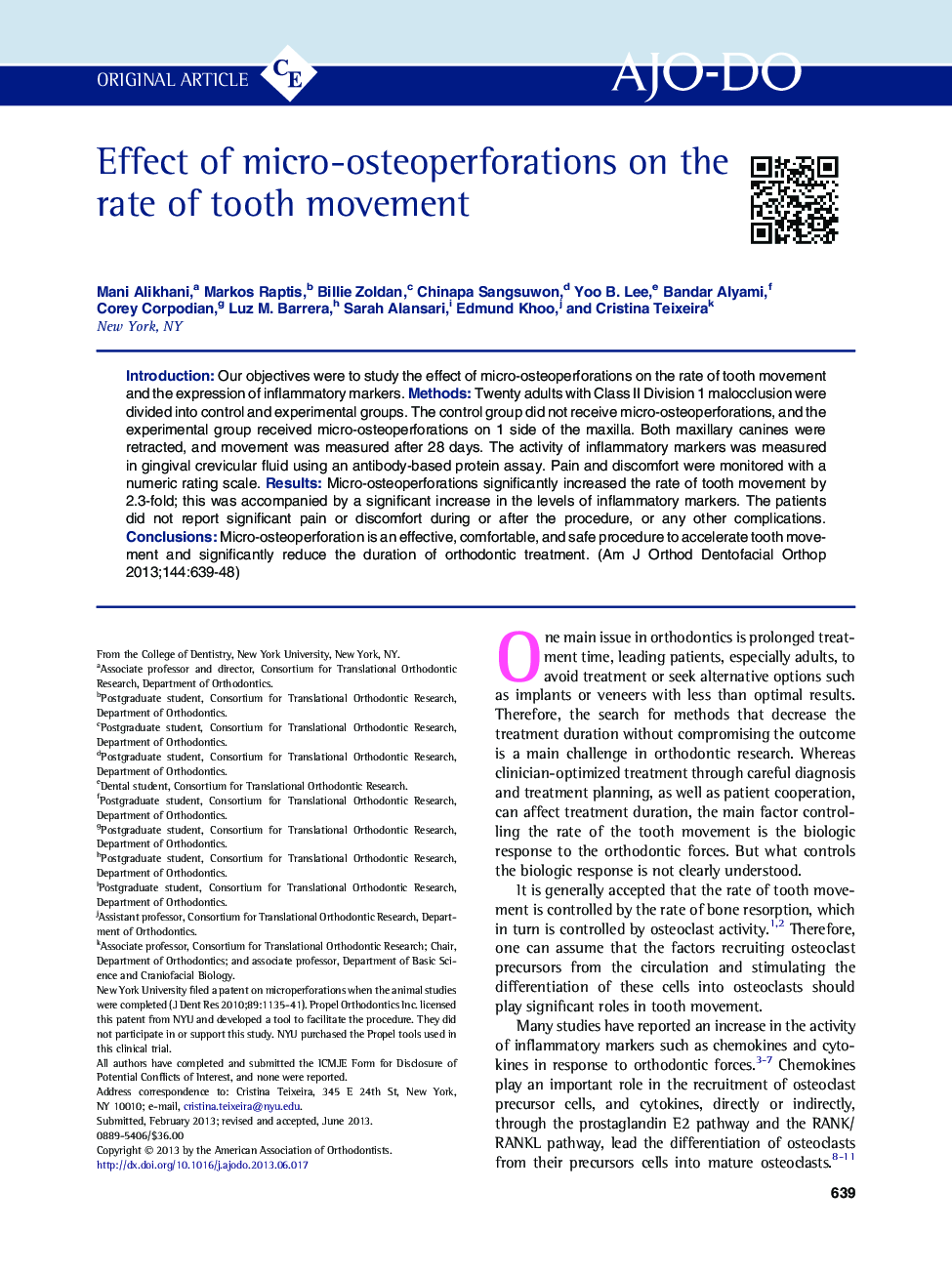| Article ID | Journal | Published Year | Pages | File Type |
|---|---|---|---|---|
| 3116552 | American Journal of Orthodontics and Dentofacial Orthopedics | 2013 | 10 Pages |
IntroductionOur objectives were to study the effect of micro-osteoperforations on the rate of tooth movement and the expression of inflammatory markers.MethodsTwenty adults with Class II Division 1 malocclusion were divided into control and experimental groups. The control group did not receive micro-osteoperforations, and the experimental group received micro-osteoperforations on 1 side of the maxilla. Both maxillary canines were retracted, and movement was measured after 28 days. The activity of inflammatory markers was measured in gingival crevicular fluid using an antibody-based protein assay. Pain and discomfort were monitored with a numeric rating scale.ResultsMicro-osteoperforations significantly increased the rate of tooth movement by 2.3-fold; this was accompanied by a significant increase in the levels of inflammatory markers. The patients did not report significant pain or discomfort during or after the procedure, or any other complications.ConclusionsMicro-osteoperforation is an effective, comfortable, and safe procedure to accelerate tooth movement and significantly reduce the duration of orthodontic treatment.
